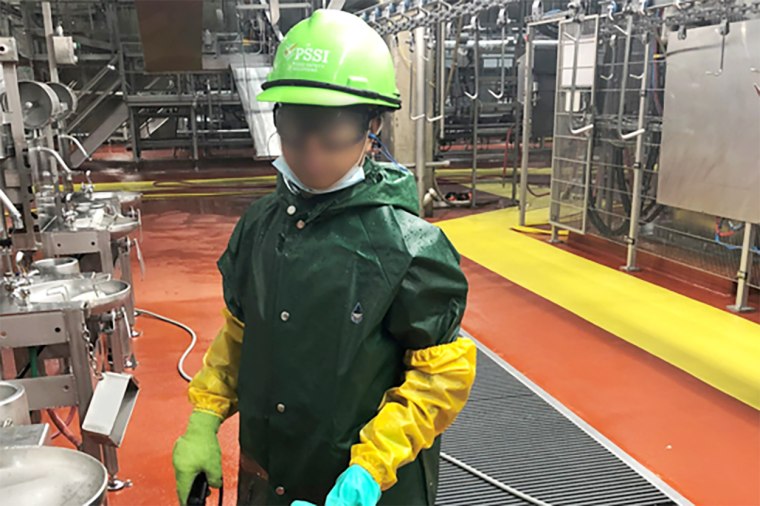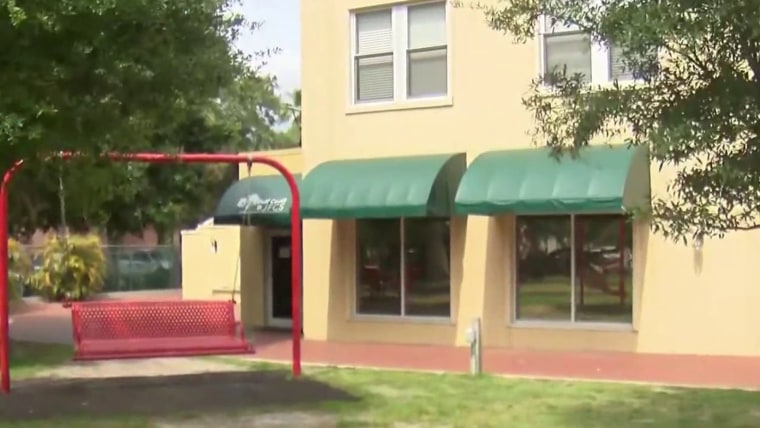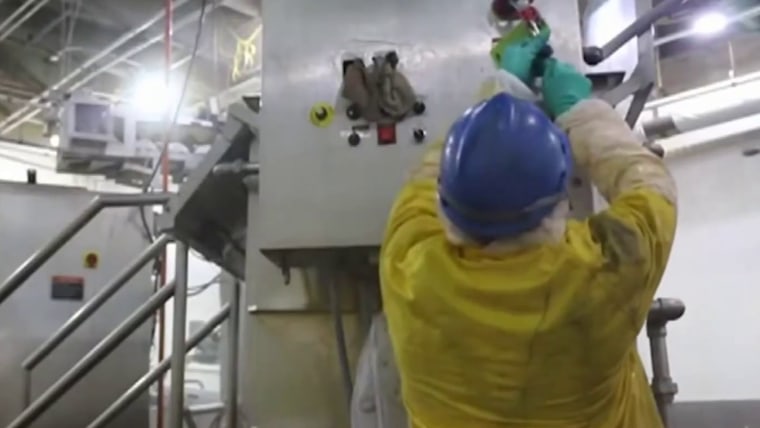Report: More than 340 migrant kids sent to live with nonrelatives who sponsored other kids
The Biden administration released 344 unaccompanied migrant children to live with nonfamily sponsors hosting three or more unaccompanied kids, says a new Health and Human Services Department audit, raising questions among advocates who worry that some minors are being sponsored by strangers who could exploit them for child labor.
The audit, conducted by the agency's Office of Refugee Resettlement, which oversees the care and release of unaccompanied minors, also showed that the number who were placed with distant relatives or nonfamily sponsors increased from 2021 to 2022, both in real terms and as a percentage of all unaccompanied minors.
“We see in our own work that some kids are placed into settings where they may not know the person and they are treated as a second-class citizen in the family and under pressure to work,” said Wendy Young, president of Kids in Need of Defense, who advocates for unaccompanied migrant children.

When migrants under 18 arrive in the U.S. alone and are processed by HHS and released inside the U.S., they must be transferred into the custody of an approved sponsor, who is usually but not always a family member. The total number of unaccompanied migrant children released by ORR since 2012 is more than 600,000, with more than a third released under the Biden administration, according to HHS figures.
In calendar year 2021, the government released 138,917 unaccompanied minors. Of those, 11.8%, or 16,456, were released to distant relatives or nonfamily sponsors.
In calendar year 2022, slightly fewer unaccompanied minors were released, at 124,781, but more of them were released to nonfamily sponsors — 18,004 or 14%.
The audit found that ORR's vetting of the nonfamily sponsors was in compliance with guidelines and included the required FBI background checks, sex offender checks, child abuse and neglect registry requests and, in some cases, home studies. Agency officials note that the number of children released to nonfamily members hosting three or more unaccompanied kids is less than 1% of the total number of children released to distant relatives or nonfamily members since the beginning of 2021.

“Every one of us owes a child our care and protection, regardless of circumstance and without exception. When it comes to the temporary custody and subsequent placement with vetted sponsors of unaccompanied children, HHS takes its responsibility seriously,” said HHS Secretary Xavier Becerra. “The audit released today confirms that ORR has worked hard to provide unaccompanied children, especially those who have experienced significant trauma, the care and attention they deserve. ORR works just as hard on its placement and sponsor vetting processes, under which most unaccompanied children are placed in the custody of a parent or close relative.”
Said Becerra, “We will continue to do our part to protect the safety and well-being of unaccompanied children, including coordinating with the Department of Labor and other partners to further crack down on child labor. We expect employers and companies to do their part and follow the law regarding child labor.”
ORR has come under increased scrutiny in the wake of reports that child labor exploitation is on the rise, including a Labor Department investigation that found more than 100 children — many of them unaccompanied minors from Guatemala — were employed cleaning Midwestern slaughterhouses. Labor officials say since 2018 there has been a 69% increase in the number of children employed in violation of labor laws.
In March 2021, when ORR was struggling to handle an influx of unaccompanied children, the agency issued new guidance prioritizing the expedited placement of unaccompanied children to limit their time in ORR care. Critics say those changes reduced scrutiny on sponsors who could exploit children for labor.
ORR examined a subset of more than 34,000 children who were released to distant relatives or nonrelative sponsors and analyzed the vetting of sponsors for the 344 children who were placed with sponsors hosting three or more unaccompanied kids. Immigrant advocates say sponsors of this kind could be a red flag for child labor trafficking.
Young told NBC News that while she wasn't surprised by the number of unaccompanied children released to nonrelatives, those releases require the most oversight. “We are seeing too many concerning examples of where that process is failing,” she said. “The most extreme is that there is evidence they have been releasing them to exploitative labor situations.”
Monica Meier, who runs the social work program for the Immigrant Legal Center in Nebraska, said her team has served more than 1,300 unaccompanied migrant children who have come to Nebraska since 2021. She says most are placed with family members so that a nonfamily sponsor housing three or more kids would be a red flag.
Meier said the unaccompanied children want to work and are vulnerable to labor trafficking. “They don't know that if you are 12 that you should not be working overnight at a meatpacking plant with dangerous chemicals, and so that allows for a situation where they are going to do what they can to make money and people will exploit them.”
The HHS audit did not break down where in the country the 344 children were released.
ORR makes at least three attempts to contact the child and sponsor 30 days after the child is released to the sponsor's care to follow up. But in 46 of the 344 cases, neither child nor sponsor was reached, according to the audit. HHS maintains it reaches the child, the sponsor or both in more than 80% of cases.
Auditors also scrutinized 172 of the 344 cases in depth. Of those cases 12 children were found to have run away and 12 more were referred to child protective services.
HHS says it will launch an Innovation and Accountability team within the ORR director's office to “focus on identifying and mitigating opportunities for potential fraud, abuse, and exploitation” among unaccompanied migrant children in the next four months.
The agency entered into a new memorandum of understanding with the Labor Department in March formalizing information sharing between the two agencies to address growing concerns about unaccompanied children working illegally.
Labor and HHS officials have been under pressure to disclose any links between the rise in child labor and the release of unaccompanied children.
In a letter last week GOP members of Congress on the House Education and Workforce Committee pressed Labor Department officials to disclose the number of children who were under the care of HHS who have been identified as victims of child labor.
The HHS Office of Inspector General is also evaluating how ORR vets sponsors for unaccompanied minors, with a report expected this summer, according to an agency spokesperson.
This “Eyes on Trafficking” story is reprinted from its original online location.
Fair Use Notice: The PBJ Learning Knowledge Vault is dedicated to advancing understanding of various social justice issues, including human trafficking and related topics. Some of the material presented on this website may contain copyrighted material, the use of which has not always been specifically authorized by the copyright owner. We are making such material available in our efforts to promote education and awareness of these important issues. There is no other central database we are aware of, so we put this together for both historical and research purposes. Articles are categorized and tagged for ease of use. We believe that this constitutes a ‘fair use' of any such copyrighted material as provided for in section 107 of the US Copyright Law. In accordance with Title 17 U.S.C. Section 107, the material on this site is distributed without profit to those who have expressed a prior interest in receiving the included information for research and educational purposes. For more information on fair use, please visit: “17 U.S. Code § 107 – Limitations on exclusive rights” on Cornell Law School's Legal Information Institute.
 ABOUT PBJ LEARNING
ABOUT PBJ LEARNING
PBJ Learning is a leading provider of online human trafficking training, focusing on awareness and prevention education. Their interactive Human Trafficking Essentials online course is used worldwide to educate professionals and individuals how to recognize human trafficking and how to respond to potential victims. Learn on any web browser (even your mobile phone) at any time.
More stories like this can be found in your PBJ Learning Knowledge Vault.
EYES ON TRAFFICKING
This “Eyes on Trafficking” story is reprinted from its original online location.
ABOUT PBJ LEARNING
PBJ Learning is a leading provider of online human trafficking training, focusing on awareness and prevention education. Their interactive Human Trafficking Essentials online course is used worldwide to educate professionals and individuals how to recognize human trafficking and how to respond to potential victims. Learn on any web browser (even your mobile phone) at any time.
More stories like this can be found in your PBJ Learning Knowledge Vault.

